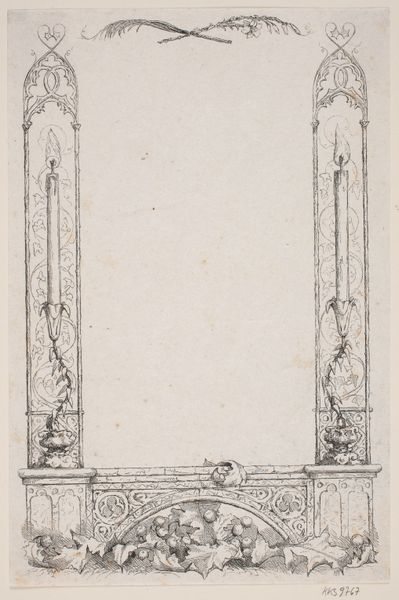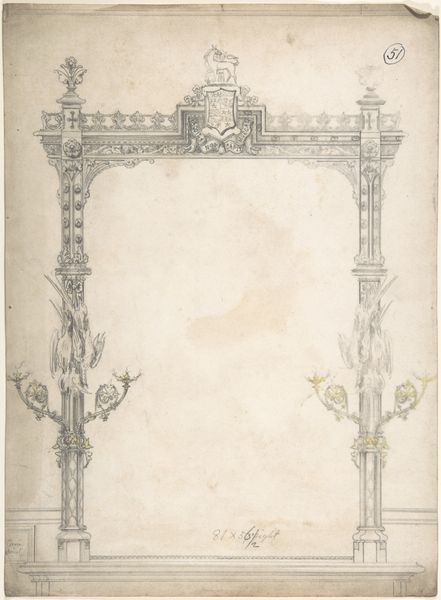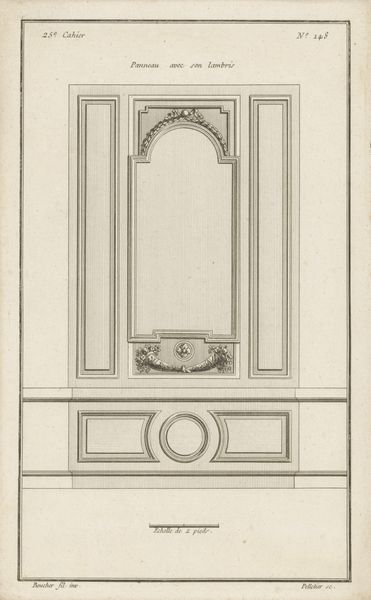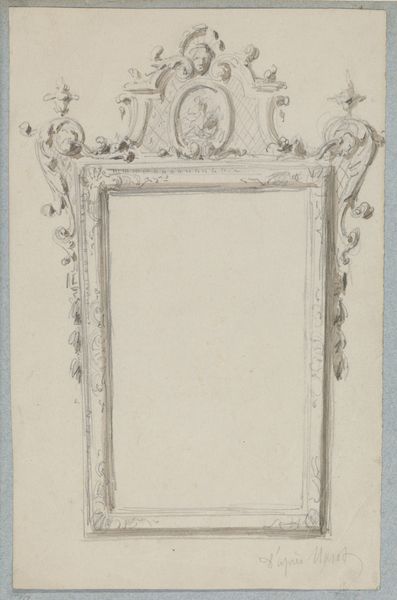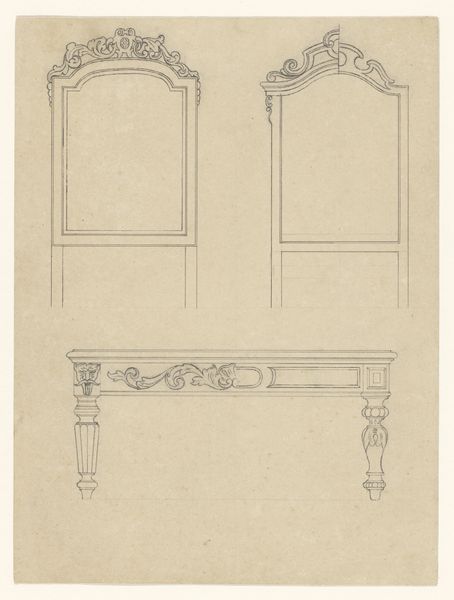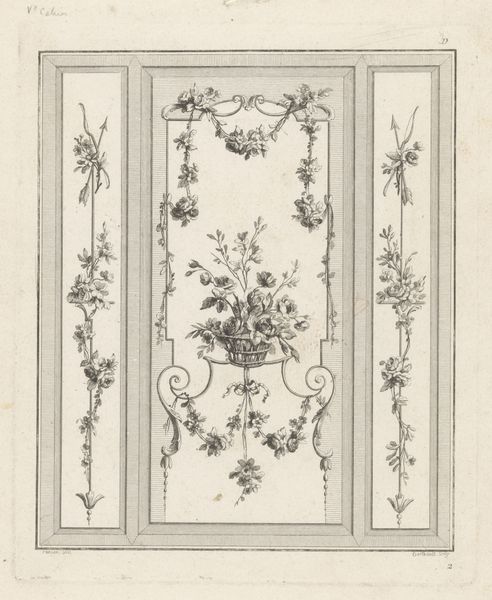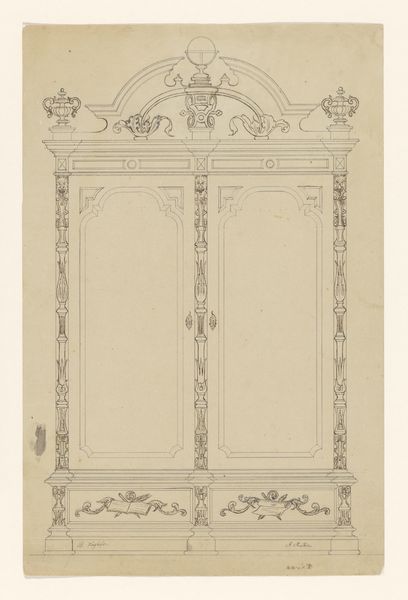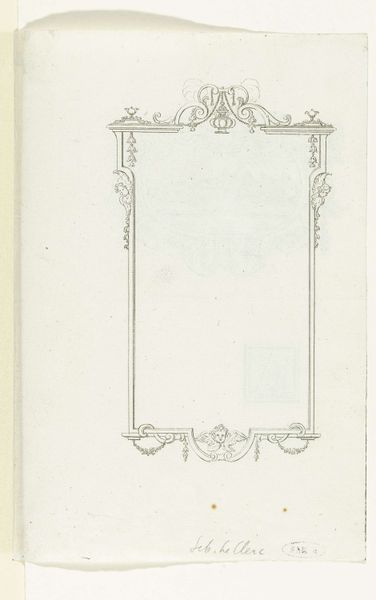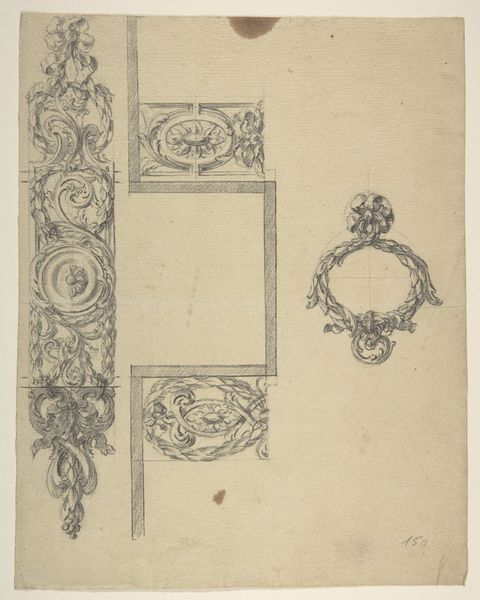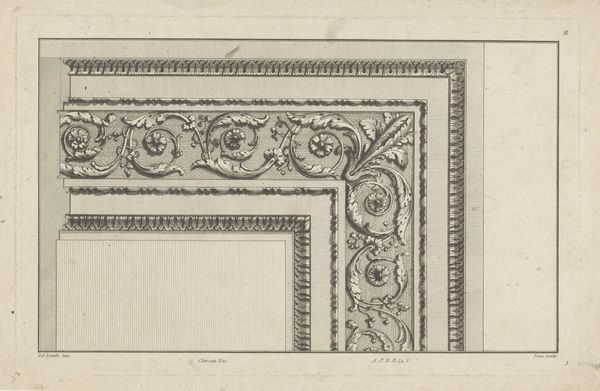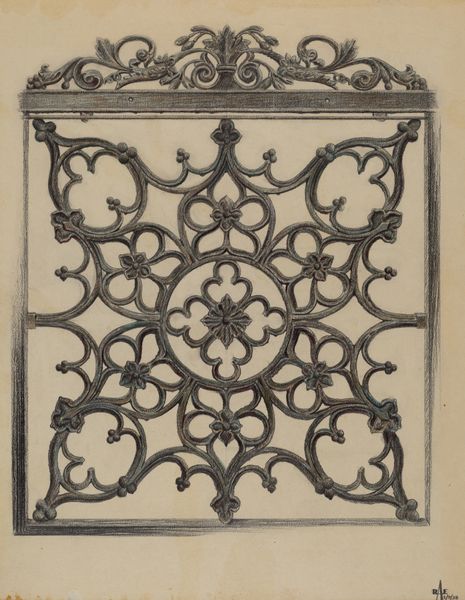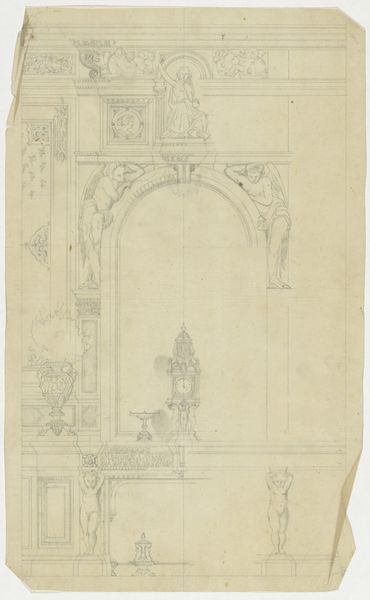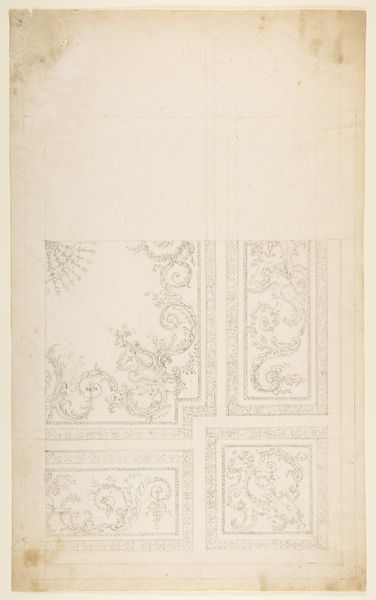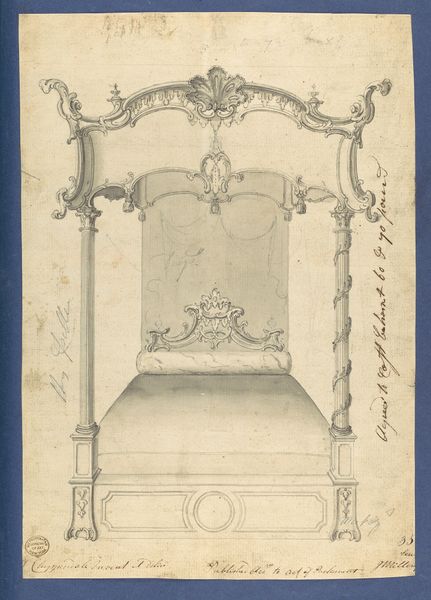
Skitse til indramningen af Wilhelm Tell skyder æblet af sin søns hoved 1800 - 1849
0:00
0:00
drawing, paper, pencil
#
drawing
#
medieval
#
paper
#
geometric
#
pencil
#
line
#
academic-art
#
watercolor
Dimensions: 193 mm (height) x 135 mm (width) (bladmaal)
Curator: I'm struck by the ornate detail; it’s so evocative. This sketch is called "Skitse til indramningen af Wilhelm Tell skyder æblet af sin søns hoved", or, "Sketch for the framing of Wilhelm Tell shooting the apple off his son's head". It was conceived sometime between 1800 and 1849 by Gustav Theodor Wegener. Editor: It certainly possesses a starkness to it, like blueprints, even with the flowing lines. Looking at the material process alone, the way he uses pencil on paper to create such complexity, speaks volumes about craft practices in that era. Curator: Indeed, and placing it within the narrative of Wilhelm Tell is key. Tell, a figure who stood against oppression and tyranny, specifically Habsburg rule. It is essential to remember the gender roles implied in this potentially lethal event, with a father placing his son in danger to challenge an abusive and unjust system. Editor: Precisely, the materials too support this—pencil allows for minute adjustments, re-rendering, it is practical; reflecting the means, almost utilitarian perhaps reflecting on labor and craft itself. This echoes Tell’s defiance rooted in the real hardships people endured. Curator: Absolutely, that resistance narrative links powerfully with broader sociopolitical conflicts and artistic reactions of the 19th century, particularly in Romanticism's challenge of authority. This can easily spark modern dialogues about class and resistance today. How is justice and rebellion forged? The visual, like the narrative, lends itself to that interpretation. Editor: And look at these delicate flourishes, all meticulously rendered by hand; it raises interesting questions about labor itself; both Wegener's labour making this drawing and then potentially labourers who would then need to create the ornate wooden frame. Consider how social strata impact this creation and others, what resources were necessary for that period of creation. Curator: Such beautiful reflections, connecting artistic choices to production means, and tying back into art's place in social dynamics... it’s crucial for truly understanding it! Editor: Considering labor and historical context has provided a lens through which to understand the impact and means by which artworks were created. I’m finding so much to consider now beyond mere visual appeal!
Comments
No comments
Be the first to comment and join the conversation on the ultimate creative platform.
